Modern medicine views a sickness as existing fully independently of the patient who has it, which neglects holistic care. Holistic therapies address the physical symptoms of the disease as well as the patient’s mental and emotional well-being. This is one of the key Reason for the rise in popularity of holistic healthcare.
Holistic healthcare can be used to treat a wide range of conditions. There are treatment plans for most ailments, including insomnia, anxiety, depression, back problems, chronic pain, and more serious issues like Lupus, early-stage cancer, and Lyme disease. For example, acupuncture can be used to treat anxiety, improve mood, boost focus, and even treat chronic pains.
Holistic treatment typically has fewer side effects as compared to prescription drugs, medical procedures, and surgery include nausea, weight gain, discomfort, and other symptoms. The holistic treatment techniques aim to reduce or get rid of the adverse side effects that are prevalent in Modern medical treatment.









